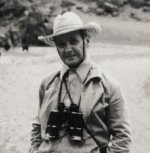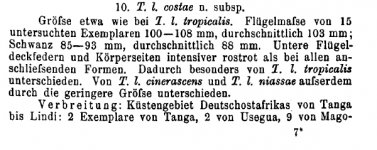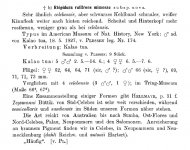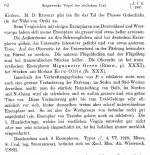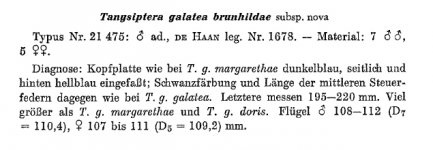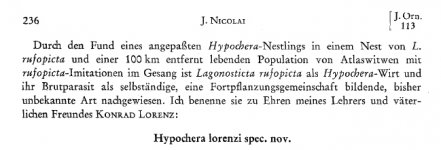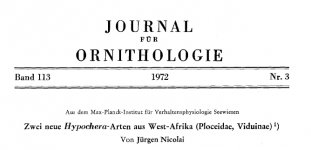I went to the library today, simply to return some books … and while there, having nothing else to do, for a while … here´s James's missing issues of
Journal für Ornithologie (from Post No. #4, the one's not dealt with earlier this thread).
●
Turdus libonyanus costae RENSCH 1923 JfO 71, p. 99 — in:
Rensch, B. 1923. Die Formenkreise
Turdus libonyanus (A. Sm.) und
Turdus olivaeeus L. Journal für Ornithologie 71 (1): 95-104. = No explicit dedication in OD … from what I can see!? (Also see earlier thread:
Turdus libonyanus costae)
●
Rhipidura rufifrons mimosae MEISE 1929, JfO 77, 460 — in:
Meise, W. 1929. Die Vögel yon Djampea und benachbarten Inseln nach einer Sammlung Baron Plessens. Journal für Ornithologie 77 (3): 431-480. = No explicit dedication … from what I can see!?
●
Phylloscopus sibilatrix ludmilae SNIGEREWSKI 1931, JfO 79, p. 61 — in:
Snigerewski, S. 1931. Zur Verbreitung der Vögel im südlichen Ural-Gebirge und neue Unterarten aus dieser Gegend. Journal für Ornithologie 79 (1): 57-66. = No explicit dedication ... from what I can see!?
●
Tanysiptera galatea brunhildae JANY 1955, JfO 96, p. 104 — in:
Jany, E. 1955. Neue Vogel-Formen yon den Nord-Molukken. Journal für Ornithologie 96 (1): 102-106. = No explicit dedication ... from what I can see!?
●
Hypochera lorenzi NICOLAI 1972, JfO 113, p. 236 — in:
Nicolai, J. 1972. Zwei neue
Hypochera-Arten aus West-Afrika (Ploceidae, Viduinae). Journal für Ornithologie 113 (3): 229-240; "
Ich benenne sie zu Ehren meines Lehrers und väterlichen Freundes KONRAD LORENZ" = (
Note: I assume
!?) the World Famous Austrian zoologist, ethologist and ornithologist
Konrad Lorenz (
1903–1989), whose full name was
Konrad Zacharias Lorenz – who shared the Nobel Prize in Physiology or Medicine with Nikolaas Tinbergen and Karl von Frisch in 1973.
Excerpts attached!
Keep up the good work!





